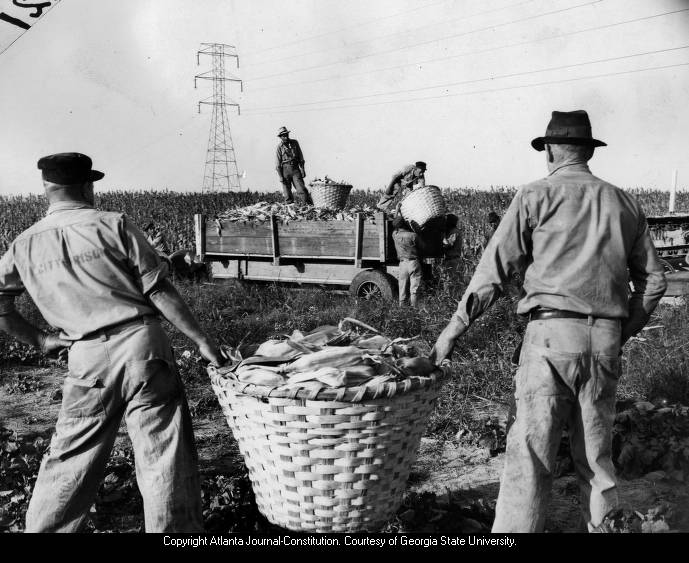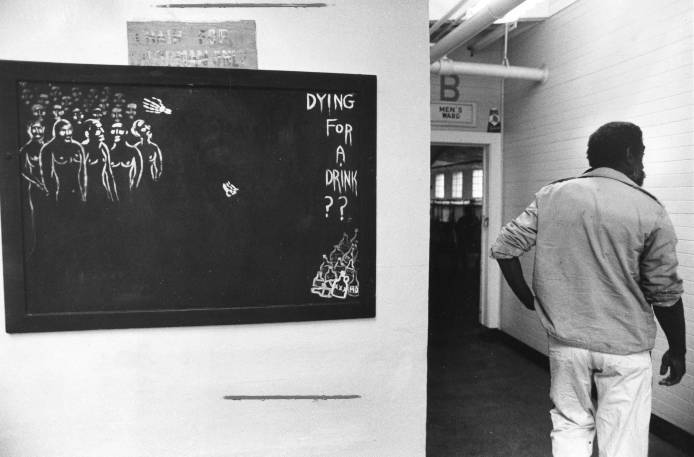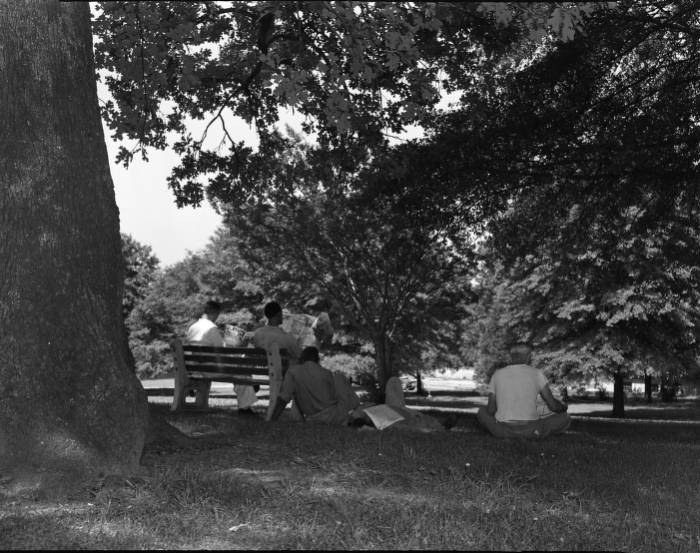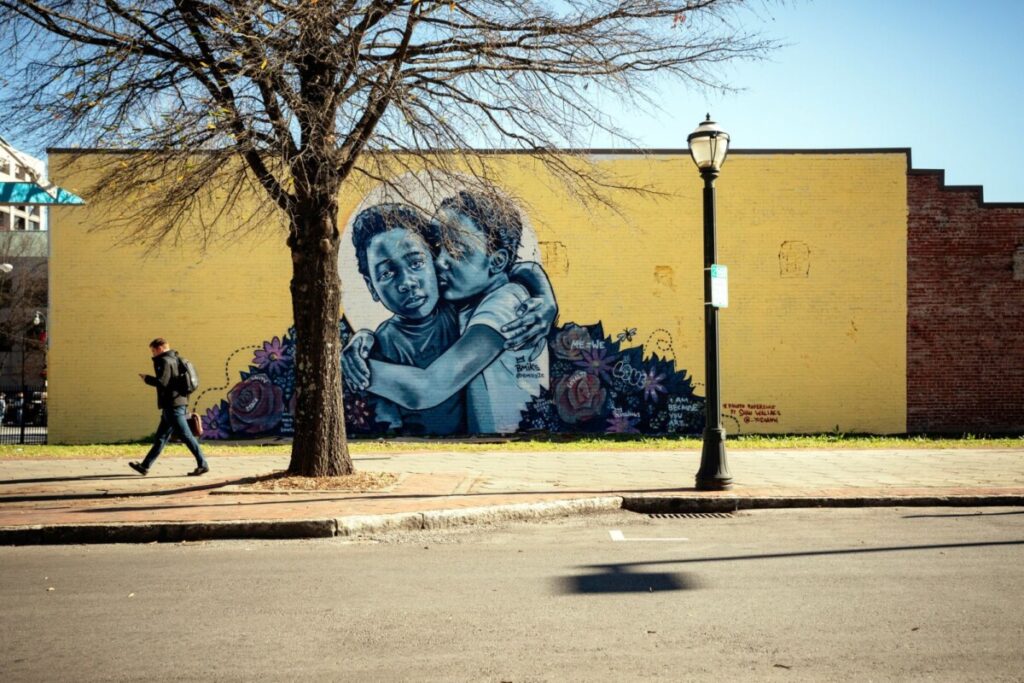The archival material I chose to focus on were a collection of photographs across the years on the site of the Old Atlanta Prison Farm. The Old Atlanta Prison Farm is the site that the City of Atlanta has allowed the Atlanta Police Foundation to lease for the construction of the Public Safety Training Center, or “Cop City” as it is known better to the people of Atlanta. Cop City would raze over 80 acres of this greenspace to build a training center for police. One of the many arguments against the creation of this monstrosity is that it erases the racial violence perpetrated on this land (from Creek removal to incarceration) and in fact perpetuates racial violence through environmental pollution and policing. The history of the Old Atlanta Prison Farm necessary to contextualize and fully realize the harm Cop City’s construction causes to communities of color in Atlanta. It is easy for people without proximity to carceral systems to think of incarceration as merely an issue to fight against instead of a physical reality that affects people and communities across time. Therefore, visualizations such as photographs are important to document the stories and the lives of those incarcerated on this land. Photos of the prison farm, collected by the Atlanta Journal-Constitution and digitally archived at Georgia State University, range from the late 1930s-1940s to the mid 1950s to the 1980s. While the physical prison and the people in the photographs change, the scenes of incarceration are intimately tied to labor on the land. They are a reminder that incarcerated people (who become predominantly Black in the photos by the 1980s), as well as the decomposing bodies of zoo animals interred on the land unceremoniously, are disrespected and dehumanized by the erasure of their history and bodies. These photographs are art, framed to illuminate both the humanity of their subjects and the unhumanity of their oppressive environment. I would like to contrast these photographs, which show how land and labor are tied up in Black oppression, to a mural called “Love and Protection” on Mitchell Street in Atlanta. This mural, painted by a Black artist, shows two Black children hugging and includes the language “me = we” and “I am because you are.” The children are also surrounded by flowers, bees, and other pieces of the natural environment. The mural depicts how Black community is supported by the environment, and how ideas of symbiotic life exist in human relationships to nature and each other. While Atlanta’s land has historically been weaponized by White people against Black people (the Old Atlanta Prison Farm used to be a plantation as well), Black communal resistance shows a reciprocal relationship with nature.




Citations:
Atlanta Journal-Constitution. (1953).Incarcerated persons reading newspapers outside at the Atlanta Prison Farm, 1953.[Photograph]. https://digitalcollections.library.gsu.edu/digital/collection/ajc/id/14794/rec/6
Atlanta Journal-Constitution. (1940). Working on the city prison farm, men carry large basket of corn, Georgia, November 3, 1940. [Photograph]. https://digitalcollections.library.gsu.edu/digital/collection/ajc/id/610/rec/1
Bridges, W. A. (1982, Oct. 19). Incarcerated person at the Atlanta Prison Farm standing near a blackboard with a message about sobriety, 1982. [Photograph]. https://digitalcollections.library.gsu.edu/digital/collection/ajc/id/14791/rec/1
Odums, B. Mike. (2019). Love + Protection. [Photograph]. Mitchell Street, Atlanta, GA. From CNN. https://www.cnn.com/2019/01/25/us/gallery/super-bowl-murals-atlanta-trnd/index.html